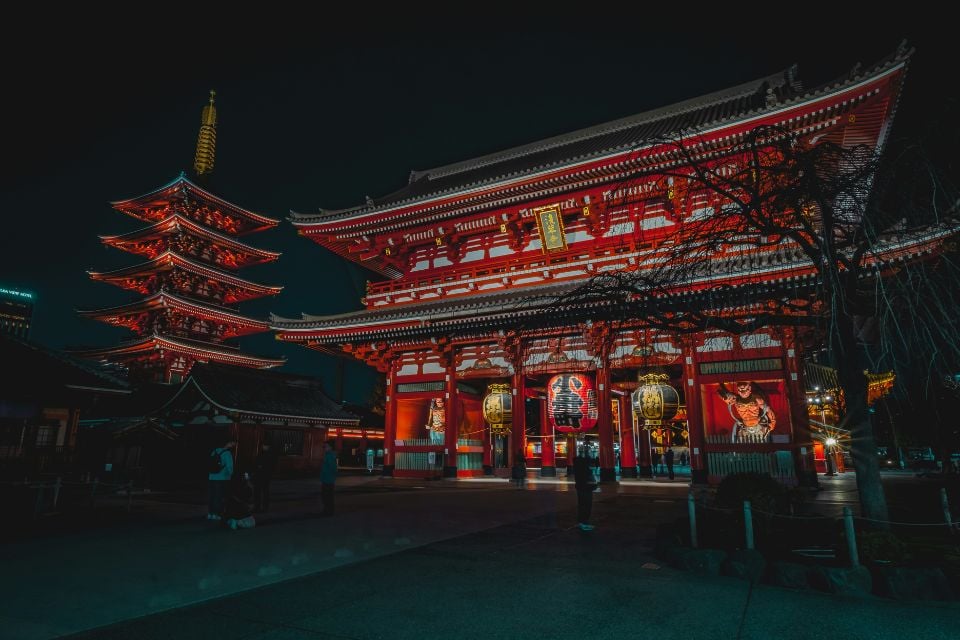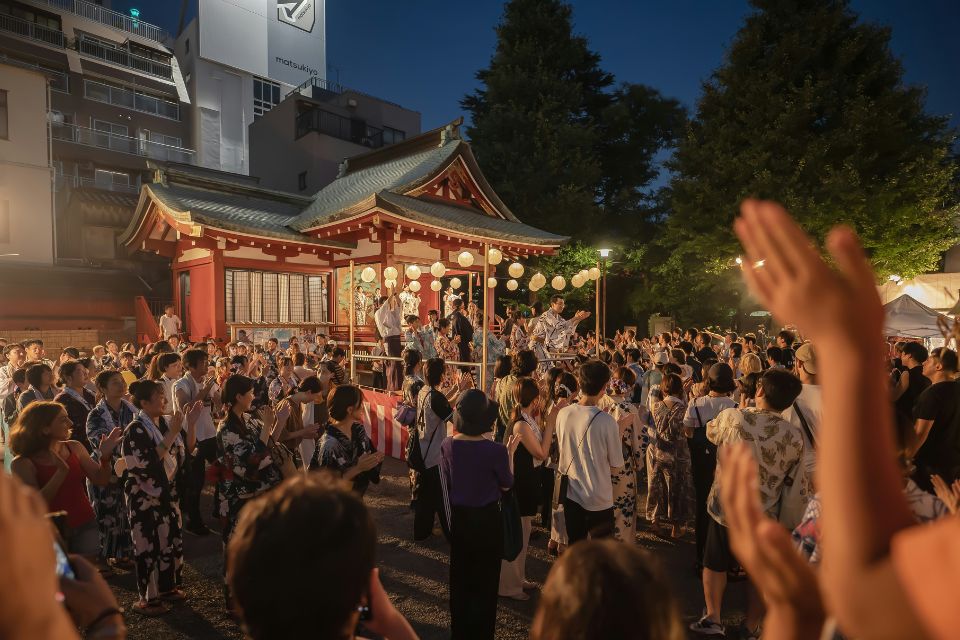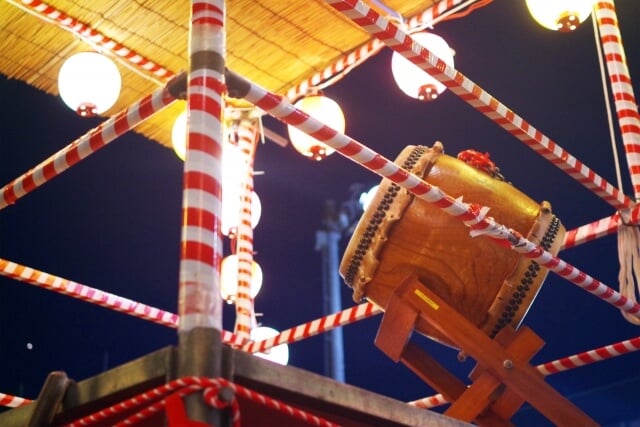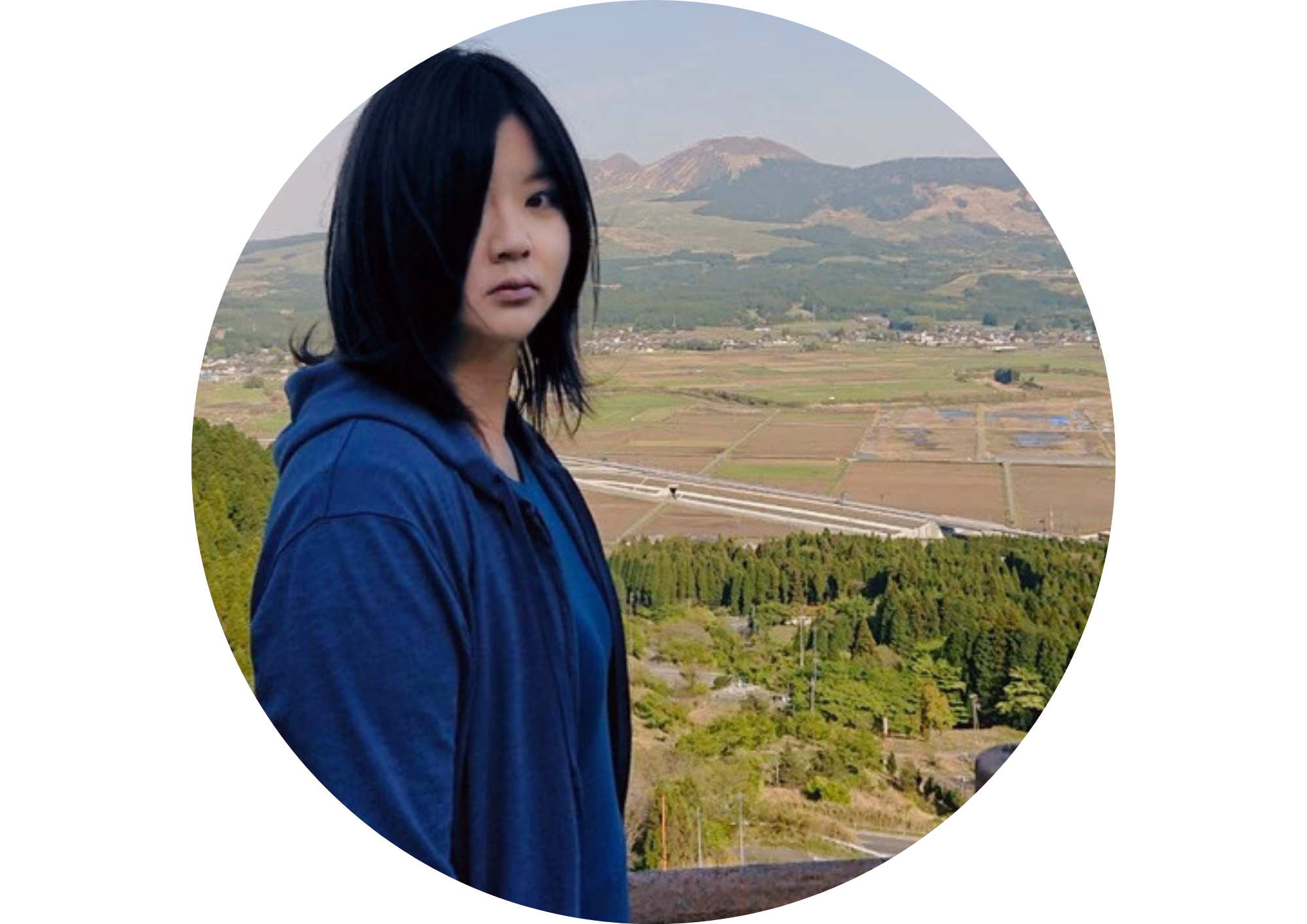
Summer festivals are a part of Japan’s ancient culture rooted in the four seasons.
Summer festivals held in various regions of Japan are filled with local history, myths, ancestral offerings, and the dispersal of disease, and are important events that unite local people to pass on traditions to future generations.
In modern times, summer festivals also play an important role as a tourism resource for local revitalization, contributing to the local economy and culture.
History of Summer Festival

Each summer festival has its own history.
Let’s take a look at the history of how and why summer festivals came to be held.
What is the origin of summer festivals?
Each summer festival has a different background and origin.
Nature worship and ancestor beliefs, such as mountain worship, are deeply related to the background of summer festivals held in various parts of Japan. Since ancient times, Japanese people have lived their lives heavily influenced by the changing seasons and natural phenomena.
In particular, summer is the time when rice plants grow in agriculture, especially rice cultivation, and many festivals held during this time serve as ceremonies to pray for a good harvest.
There are also summer festivals that originated as ceremonies to offer offer sacrifices to the spirits of ancestors and ceremonies with wishes to ward off epidemics.
Summer festivals have meaning.
Let’s just have fun and get together for a summer festival! Let’s go outside because it’s a warm season! Summer festivals are not just about having fun with everyone!
In many cases, summer festivals are imbued with deep meanings and are religious and customary in that they are rituals and offerings.
For example, one such event is the “Tasobi” or “Otaue Festival,” in which people pray to the gods for the rice plants to grow well after planting is completed. Other festivals have mythological backgrounds, such as Tanabata (Star Festival), and some festivals are associated with wishes to ward off epidemics and other diseases.
Summer is also a time when diseases can easily spread due to high temperatures and humidity. Because of this season, many festivals are held to ward off epidemics.
Hakata Gion Yamakasa is also said to be a festival to wish away the plague. There are also festivals that are held with the wish to drive away evil spirits.
In the Nara and Heian periods, a festival called “Goryoe” was held by aristocrats and royalty. During this period, it was believed that the evil spirits of people who had died unlawfully were causing epidemics in retaliation, and the “Goryoe” was held to appease these evil spirits. This is said to be the origin of the Gion Festival in Kyoto.
In addition, many summer festivals also include rituals that utilize fire and water. This also uses sacred fire to drive away evil spirits and purify evil spirits.
The “Gozan-no-Okuribi” in Kyoto is to send off the spirits of ancestors.
The “water sprinkling festivals” and “boat festivals” held in various regions are also based on a spiritual concept that has been rooted in the region since ancient times, using the power of nature to make offerings and expel spirits. In this way, the wishes and myths that people had during the summer season have developed in each region and become the prototype for summer festivals.
Typical summer festivals by region

Summer festivals are events in which diverse cultures and traditions are passed on.
Each region has its typical summer festival, some of which are known as major events that attract tourists from all over the country.
Summer Festivals in Tohoku Region|Nebuta Festival, Kanto Festival

The most famous summer festivals in the Tohoku region are Aomori’s Nebuta Festival and Akita’s Kanto Festival.
The Nebuta Festival is a summer festival in Aomori Prefecture. It is a very heroic festival in which huge lanterns called “Nebuta” are carried through the streets, and the beauty of the lit Nebuta is popular not only among the Japanese but also among foreign visitors.
The Nebuta Matsuri was designated as an Important Intangible Folk Cultural Asset of Japan in 1980.
Kanto Festival is a summer festival in Akita Prefecture. Many lanterns are hung from long bamboo poles and paraded through the streets.
The Kanto lanterns resemble ears of rice, and the many lanterns hung in a row represent rice bales. These lanterns come in several sizes, with the largest reaching 12 meters in height.
The bamboo pole is then placed on the forehead, waist, and shoulders to pray for a good harvest. It is a traditional summer festival performed with great skill and experience. The Kanto Festival is designated as an Important Intangible Folk Cultural Asset.
Summer Festivals in Kanto Area|Sanja Festival/Kanda Festival

Sanja Matsuri is a festival held every year on the third weekend of May at Asakusa Shrine, and its official name is Asakusa Shrine Grand Festival.
The Sanja Matsuri originated as a festival to worship Hinomae Hamanari, Hinomae Takenari, and Doji Manakachi, who are believed to have been involved in the founding of Sensoji Temple. It is called the “Sanja Matsuri” because these three deities are enshrined. The Sanja Matsuri has many attractions, but the “miya-mikoshi” is especially famous. The miya-mikoshi can be seen at the “Omatsuri Hiroba” during the festival period, but only members of the neighborhood association are allowed to participate in the head office mikoshi parade “Miyairi in the eastern area.
Kanda Matsuri is a festival held at Kanda Myojin, also known as “Tenka Matsuri. This festival is not held every year, but is scheduled once every two years, every other year in May. Kanda Matsuri is also one of the “Three Great Festivals of Japan” and the “Three Great Festivals of Edo”. It is famous for its Shinto rituals called Jinkosai, mikoshi miyairi, and taiko festivals.
Summer Festivals in Chubu Area|Takayama Festival

One of the most famous summer festivals in the Chubu region is the Takayama Festival in Gifu Prefecture.
The Takayama Matsuri consists of two festival events: the Sanno Matsuri, a regular festival at Hie Shrine, and the Hachiman Matsuri, a regular festival at Sakurayama Hachiman Shrine.
Takayama Festival is famous for its yatai, but we are not referring here to stores selling food. Yatai in the Takayama Festival refers to floats and Hikiyama. In this region, floats and Hikiyama have long been called Yatai.
These floats are very traditional, dating back to the Edo period, and are very beautifully decorated. The night parade of the floats is a fantastic event that attracts many tourists.
The Takayama Festival has been registered as an intangible cultural heritage by UNESCO.
Summer Festivals in Kansai Region|Gion Festival, Tenjin Festival

The Gion Festival has a very long history of more than 1,000 years.
This festival is held at Yasaka Shrine over a period as long as one month, from the Yoshiwari Festival on July 1 to the Natsukoshimatsuri Festival at Epidemic Shrine on July 31. Gion Festival is known as one of the three major festivals in Japan, and the city of Kyoto is filled with festive atmosphere during the festival period.
The origin of the Gion Festival is believed to be the “Goreikai,” which was started in 869 during the Heian period (794-1185) to quell a plague. The highlight of the month-long Gion Festival is the procession. The procession is an event that attracts many tourists, as the floats are paraded through the streets.
Tenjin Matsuri is a festival held at Tenmangu shrines around Japan on the anniversary of Sugawara no Michizane’s death. Tenjin Matsuri is held all over Japan, but the Tenjin Matsuri held at Osaka Tenmangu Shrine is the largest and most famous.
Osaka’s Tenjin Festival is one of the three major festivals in Japan and one of the three major summer festivals in Osaka, and is an event that attracts many visitors every year.
The Tenjin Festival is held every year from the auspicious day in late June to July 25, and the climax of the festival, the night of the main shrine on July 25, features a boat procession of 100 boats and a votive fireworks display, allowing visitors to enjoy both water and fire elements of the summer festival.
Summer Festivals in Chugoku and Shikoku Area|Awaodori and Yosakoi Festivals

Awa Odori is a festival held annually from August 12 to 15 in Tokushima City, Tokushima Prefecture. It is famous throughout Japan and is known as one of the three major Bon Odori dances in Japan.
Awa Odori originated in the Edo period (1603-1867), and the unique rhythm and dancing of Awa Odori are well known throughout Japan. Awa Odori dancers parade through the streets in groups called “ren,” but there is also a “ren” for people who jump in and join the dancing, so that ordinary citizens and tourists can also join in the dancing.
Another appeal of Awa Odori is that it is open to everyone, with relatively little of the exclusivity sometimes seen in festivals.
The Yosakoi Festival is held annually in Kochi Prefecture from August 9 to 12. It is considered one of the three major festivals in Shikoku. The festival begins with the eve of the festival on August 9, the main festival on August 10 and 11, and the national festival on August 12.
This is a relatively new festival, created as a counterpart to Awa Odori, and is a summer festival with a strong element of community development. It is a summer festival with a strong element of community development. It is also a festival that is constantly introducing new styles, and the dance performance incorporates various dance elements.
It is a very big event with a fireworks display on the eve of the festival. The Yosakoi Festival has become a nationally famous festival that attracts 1 million tourists over the four days.
Summer festivals in Kyushu|Hakata Gion Yamakasa

Hakata Gion Yamakasa is an annual festival held in Fukuoka City from July 1 to 15, and is designated as an Important Intangible Folk Cultural Asset of Japan.
The famous Kushida-iriri is a Yamakasa dedication ceremony in Hakata Gion Yamakasa, in which each group called “Nagare” (flow) follows a predetermined course toward Kushida Shrine.
The festival is a festival that carefully preserves tradition, and even today, only men are allowed to participate as bearers, a tradition that is forbidden to women. In addition, only people from the area and other related people are allowed to participate in the festival as bearers.
There are various theories about the origin of Hakata Gion Yamakasa, but it is believed to have originated as a prayer to ward off an epidemic. When the festival period approaches, Yamakasa is displayed in various places in Fukuoka City, and visitors can see the beautiful Yamakasa up close.
The climax of the Hakata Gion Yamakasa festival, the Kushida Iriri, in which people compete for the best time to carry the portable shrine, attracts many people who visit the roadside and Kushida Shrine even though it is early in the morning, and is broadcast live on TV in the local area.
Myths and Legends about Summer Festivals

When trying to learn about the history of summer festivals, one must also look to myths and legends.
Here are some myths and legends about summer festivals.
Myths related to summer festivals
Many of the summer festivals held throughout Japan are strongly influenced by ancient myths and legends. In fact, the famous myth of Ama-no-Iwato (Ama-no-Iwato) has also influenced summer festivals.
The myth of Ama-no-Iwato tells the story of Amaterasu, the sun goddess, who hides in Ama-no-Iwato because she is angry with her younger brother, Susanoo-no-Mikoto.
The world is enveloped in darkness because Amaterasu, the sun god, has shut himself away in Iwato.
The other gods who were troubled tried to get Amaterasu to somehow come out of Ama-no-Iwato, and a god named Amaterasu-no-mikoto danced in front of the Iwato. Amaterasu-no-Mikoto danced in front of Iwato, and Amaterasu came out of Ama-no-Iwato, attracted by the music and dance of the dance.
This myth is said to have influenced the Bon Odori and performance dances held at summer festivals.
Ancient myths and legends influence today’s summer festivals.
Many ancient myths and legends, such as the myth of Ama-no-Iwato, are the origin of today’s summer festivals and are strong influencing factors.
The Gion Festival’s Gorei Kai and Kyoto’s Okuribi are typical examples of such festivals.
Summer festivals are lively and fun, but they are not just about getting together and having a good time; history and tradition are behind them.
Summer and fall festivals have different purposes.

The difference between a summer festival and an autumn festival is not clear, but lies in the purpose and the content of the events.
Many summer festivals are held to ward off bad luck, ward off epidemics, and offer offerings to the spirits of ancestors, and are characterized by grand dances and parades of portable shrines.
Autumn festivals, on the other hand, are more of a harvest thanksgiving festival, with ceremonies and votive offerings to thank and rejoice with the gods for a bountiful harvest.
They are also meant to celebrate the harvest and pray for a bountiful harvest for the coming year. Both summer and autumn festivals have rituals, and it is not surprising that they seem similar since each festival has a different purpose.
What is the appeal of summer festivals?

Summer festivals, which have become a pervasive annual summer event, offer a variety of attractions.
Consider the appeal and role of summer festivals.
Summer festivals are traditional events enjoyed by everyone
Summer festivals are often traditional events that bring the community together.
Men and women of all ages participate in the festival, and events such as Bon Odori, food stalls, and fireworks provide a place for local people to interact with each other.
Community-based festivals function as a place for intergenerational interaction, and local summer festivals that are smaller in scale are especially strong in this element.
In addition, nationally renowned summer festivals provide an opportunity for tourists from other regions to visit and enjoy the exchange with locals, as well as a tourist resource for the region.
Summer festivals and community revitalization
Summer festivals are tourism resources for local revitalization The summer festival is an event that can also be used as a tourism resource to revitalize the local community.
It is not unusual for a nationally renowned festival to attract more than one million tourists. Festivals as tourism resources are meaningful in supporting the local economy and communicating the attractiveness of the region.
The festival will raise the profile of the area and is expected to have an economic impact as tourists visit during the festival period.
It also serves as an opportunity to promote local specialties and the region’s unique culture. Summer festivals provide an opportunity for people throughout the country to learn about traditional rituals rooted in the local community.
Summer Festivals as Cultural Inheritance
Summer festivals have an important role to play in passing on the traditional culture of the community to the next generation.
The events, rituals, and traditions that take place at summer festivals vary from festival to festival and region to region. However, many of them are based on old traditions, customs, and local beliefs.
Each festival event, such as mikoshi (portable shrines), floats, dances, and songs, symbolizes the history and culture of the area.
These traditional events are then passed on to the next generation through festivals. The participation of people of all ages in festivals and the passing on of festival traditions to the next generation provide opportunities for young people to experience the history of the community.
In this way, local…and by extension, Japanese traditional culture will be passed on to the next generation.
Festivals that bring the community together also serve to foster a sense of community bonding, the importance of community, and a sense of responsibility as a member of the community.
The Meaning and Role of Taiko and Festival Music
Speaking of festivals, taiko drums and festival music are indispensable.
The rhythm of taiko drums and festival music is meant to be an offering to the gods, to make offerings to ancestors, and to drive away evil spirits, and as a very powerful sound, it adds color to the festival with its light rhythm.
Many of the instruments used are traditional, and the taiko drums and musical accompaniment, which are not usually heard, enhance the atmosphere of the festival.
In particular, the sound of taiko drums has had a sacred meaning since ancient times and is believed to have the power to drive away evil spirits. Different traditions of taiko and festival music are preserved in different regions, and each region has its own unique characteristics.
summary

Summer festivals are important events that pass on ancient Japanese traditions and beliefs to the next generation.
The background of the festival is a Shinto ritual to express gratitude to the gods, to make offerings to ancestors, and to ward off epidemics, and is also influenced by Japanese mythology.
Summer festivals are more than just a place to gather and socialize; they are also a place to pass on traditions and history. Large-scale summer festivals also serve as a tourism resource, leading to economic benefits and local publicity.

カメラとピアノが趣味のライターです。某有名バンドの大ファンで遠征がてら観光するのが好き…地方の工芸品や歴史にも興味があります。
自宅ではゴールデンレトリバーとインコ、猫に囲まれてコーヒーを片手に執筆しています。様々な角度から日本の魅力をお伝えします。


